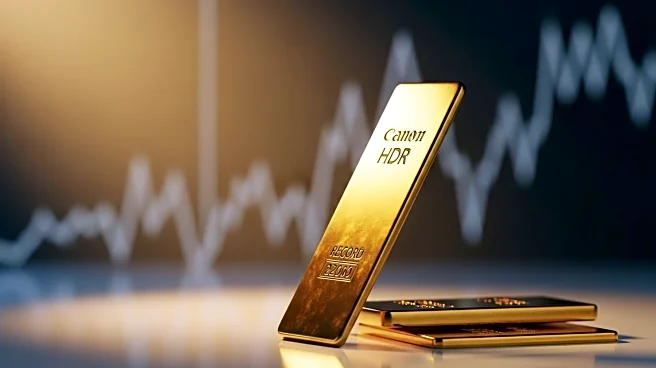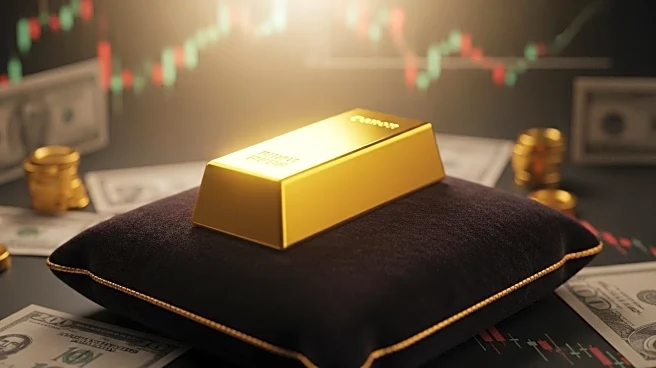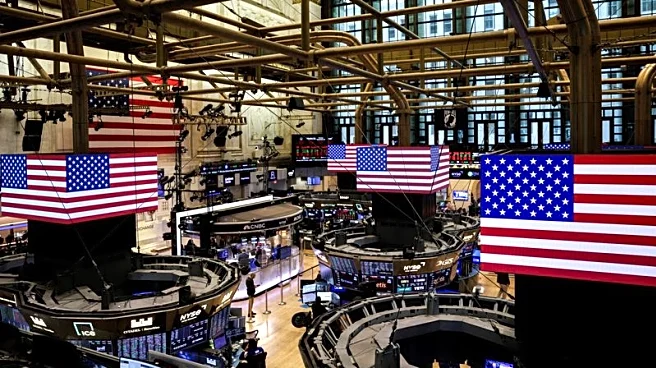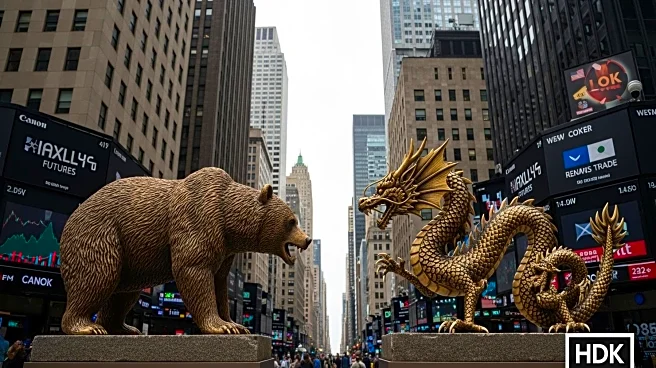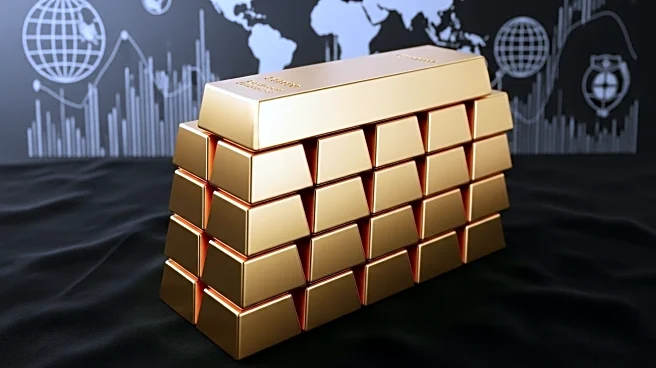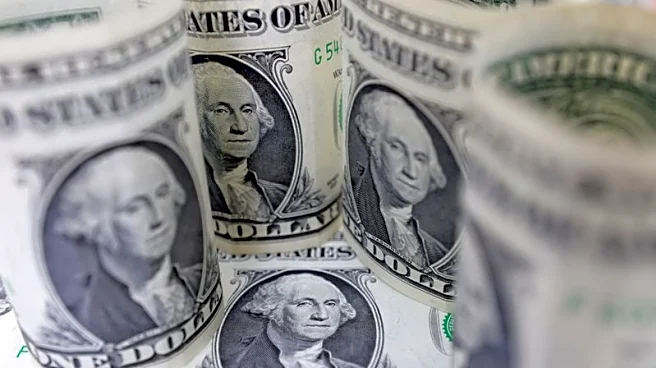What's Happening?
Gold prices have surged to a record high, exceeding $4,100 per ounce, driven by expectations of a U.S. Federal Reserve rate cut and heightened trade tensions between the United States and China. The anticipation of a rate cut has bolstered safe-haven assets, including gold and silver, which also reached an all-time high. President Trump's threat to impose a 100% tariff on Chinese goods has further fueled market uncertainties, contributing to the rise in precious metal prices. Analysts from Bank of America and Societe Generale predict that gold could reach $5,000 per ounce by 2026, reflecting strong central bank buying and robust exchange-traded fund inflows.
Why It's Important?
The record high in gold prices signifies investor sentiment towards safe-haven assets amid geopolitical and economic uncertainties. The potential rate cut by the Federal Reserve could lower interest rates, making non-yielding assets like gold more attractive. The ongoing trade tensions between the U.S. and China, exacerbated by tariff threats, have increased market volatility, prompting investors to seek refuge in precious metals. This trend could impact various stakeholders, including investors, central banks, and industries reliant on gold and silver, as they navigate the implications of fluctuating commodity prices.
What's Next?
Investors are closely monitoring upcoming events, including a meeting between President Trump and Chinese leader Xi Jinping, which could influence trade relations and market dynamics. Additionally, Federal Reserve Chair Jerome Powell's speech at the NABE annual meeting is anticipated to provide further insights into monetary policy, with markets expecting a 25-basis-point rate cut. These developments could shape future trends in gold and silver prices, as well as broader economic conditions.
Beyond the Headlines
The surge in gold prices highlights broader macroeconomic trends, such as de-dollarization and shifts in global trade policies. The interplay between geopolitical tensions and monetary policy decisions underscores the complex environment in which investors operate. Long-term implications may include changes in investment strategies and adjustments in central bank reserves, as stakeholders adapt to evolving economic landscapes.
